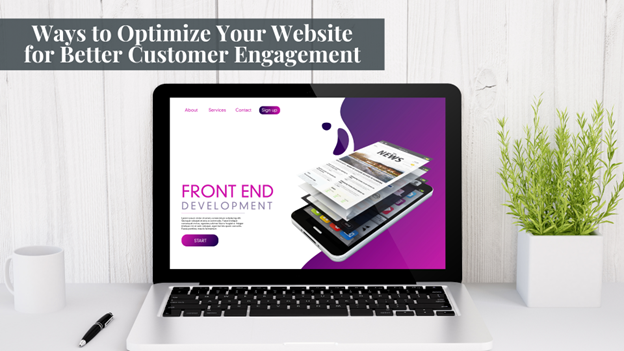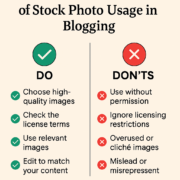Ways to Optimize Your Website for Better Customer Engagement
In modern times, a website is often the first point of contact between a business and its customers will have. Ensuring your website provides an engaging and user-friendly experience is paramount to building your visitors into loyal customers. You can bring more visitors to your website and increase conversions by optimizing for good customer engagement.
Whether you hire the services of a top-rated web development company or plan to do the optimization yourself, you have a couple of options to try and enhance the levels of your site’s engagement.
In this paper, we are going to touch upon different ways of optimization you might want to try on your website to improve customer engagement and make sure you have an online space both functional and captivating.
Prioritize User-Friendly Design
A clean, user-friendly design keeps visitors on your site longer and encourages interaction with your content. Ensure your layout is responsive across all devices and use readable typography with high contrast. Keep the design minimalistic and consistent, incorporate accessibility features, and optimize for fast load times. Use engaging visuals that enhance content and include clear, compelling CTAs. Lastly, provide instant feedback for user actions to reassure them. This approach ensures a functional and enjoyable experience for users.
For instance, for businesses in the highly competitive market of San Francisco, having a professionally designed website is critical to standing out. When it comes to web design San Francisco, it’s essential to focus on creating a site that not only looks aesthetically pleasing but also offers a seamless user experience.
According to the City and County, there are 412 businesses in San Francisco registered as Neighborhood Anchor Businesses (operating for 15 years or more in the city). This level of competition makes it crucial to have a strong competitive edge, and a well-established website is an effective way to achieve that.
Work with Professional Web Design Services
But if design is not quite your thing, you may want to look for the services of a professional web design service. They can make your website more visually appealing and more navigable.
Professional designers, even those offering web design for small businesses, know just how to balance creativity with user experience. Professional designers will be able to make an engaging layout of your products or services while still making navigation easy.
Responsive Web Design
Nowadays, in this day and age, mobile optimization is all the more important in a multi-device world. A responsive web design expert will make sure that your site will look and function fantastic across all devices, from desktops to smartphones.
Since more people are browsing on their mobile devices, having a responsive site means a seamless experience for every single visitor no matter how they reach your site.
Improve Website Loading Speed
Website speed is the major concern when it comes to engaging customers. A slow-loading website may irritate the visitors and move away from it. Research shows that even a few seconds of delay can result in a significant loss in the customer’s satisfaction.
Generally, people want fast site loading speed, and unless your website provides them with it, there is a good chance they will shift to some other competitor’s site.
How to Speed Up Your Site
- Optimize Images: Big files of images make your website slow. Compress them using image compression tools without losing quality.
- Enable Browser Caching: If you do this, your previously visited web pages will load faster for repeat visitors.
- Minimize HTTP Requests: When you reduce the number of page elements like scripts, images, and CSS, you can lower the load on your page.
- Collaborate with a Developer: A custom website designer can assist you in improving the technical parts of your site for better speeds and higher performance.
Improve the Experience on Mobile Devices
Now, large chunks of traffic are coming from mobile devices. Optimizing for mobile users, therefore, is highly crucial for customer engagement.
Optimization of your website for mobile users does not simply imply shrinking the size of the desktop website to be viewed on a small screen. Instead, it means creating an actual design that is supposed to favor mobile users with easy and quick navigation, readable text, and fast loading aspects.
Mobile Optimization Strategies
- Mobile-First Approach: The first design of your website should be for the mobile user; then you could upscale it to a desktop.
- Simplify Navigation: Allow easy access to menus and buttons on mobile devices.
- Optimize Touch Elements: Buttons and links should be large enough to press with a finger.
- Hire a Local Website Designer: You can have them design and build your mobile experience like your local customers are used to, if you hire the services of a local website designer.
Use Calls to Action (CTAs)
So, one of the best mechanisms to increase engagement with customers would be a properly designed CTA. Whether you need newsletter subscriptions, guide downloads, or purchases, a lucid and clear CTA could do the trick.
To effectively wield your calls to action, clarity and directness are paramount. Use actionable language in the form of “Sign Up Now” or “Get Your Free Trial” to let users know where to go next. If you need to get visitors acting swiftly, build urgency with “Limited Time Offer” or “Hurry! Only a Few Left”.
Also, placing your CTAs at strategic positions where they can be viewed, say above the fold or around engaging content areas, will ensure that calls-to-actions reach the attention of users and encourage them to interact more with your site.
Leverage SEO for Engagement
Search engine optimization is crucial to provide traffic to your website. SEO, however, is not just about ranking in the search engines but also has an important role in engaging customers. If done right, SEO lets your site reach the right audience by showing content relevant to their needs.
SEO Best Practices for Engagement
- Target Relevant Keywords: Utilize resources such as Google Keyword Planner to identify exactly which keywords your target audience is searching for.
- Optimize for Local SEO: If you are a local business, then target web design for small businesses. Include location-based keywords in your title tags, meta descriptions, and content.
- Content that Answers Practical Questions: The blog postings, articles, and guides should have answers to common questions of customers or ways to get out of problems.
- Interlinking the Pages: Internal linking should be such that customers access further useful content. This will convince customers to spend more time on the website.

Conclusion
In today’s digital marketplace, improvement in customer engagement on websites is increasingly important to more and more businesses. Everything from enhancing your design by hiring a custom website designer to improving your SEO and content strategy, there are numerous ways to create an interactive online experience for visitors.
By implementing the appropriate strategies, you’re sure to increase customer satisfaction while reducing bounces, ensuring better conversions. Whether with a high-rated web development agency or doing everything yourself, the bottom line is to constantly adapt and fine-tune your site based on the ever-changing needs of the audience.
FAQs
- How can I increase the loading speed of my website so people can see and engage with more of it?
You can improve the loading speed of your website by image optimization, reducing HTTP requests, and enabling browser caching.
- What is the role of responsive web design in customer engagement?
Responsive web design provides that your website should look and perform appropriately on every device to enhance user experience and engagement.
- How does live chat increase customer engagement within a website?
Live chat allows one to interact right on the spot; therefore, through live chat, the visitor will have his questions answered in no time and be more likely to convert.




